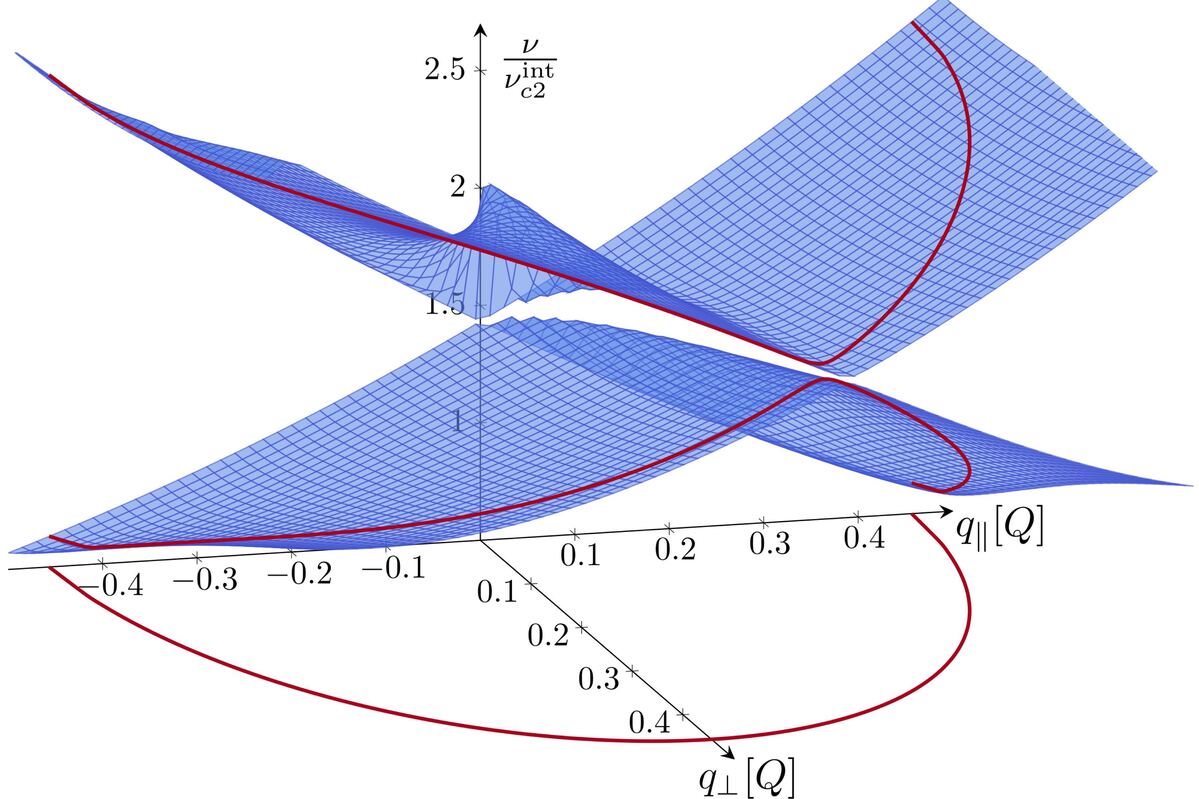Research: Brillouin light scattering of conical spin waves
Similar to the membrane of a drum, the long-range magnetic order in magnetic materials possesses characteristic excitation modes which are known as spin waves or magnons. When the magnetization is perturbed from its equilibrium configuration, excitations will decompose into characteristic spin wave modes that propagate through the material. For conventional ferromagnets the spin wave modes are well understood but they are less explored in more complicated magnets hosting magnetic textures like spin helices.
Magnetic helices arise in the presence of a Dzyaloshinskii-Moriya interaction in non-centrosymmetric magnetic materials like Cu2OSeO3. The magnetization then winds periodically around the axis singled out by the applied magnetic field forming a helix with a characteristic spatial periodicity λ. The local magnetization is in addition tilted towards the field giving rise to a conical helix with a cone angle that varies as a function of the applied field. Interestingly, the spin waves of the conical helix experience Bragg scattering from its periodicity, and a magnon band structure arises in analogy to the band structure of electrons in crystals. The characteristic spin wave modes of this band structure have been already investigated by magnetic resonance spectroscopy that probe these modes at zero wavevector, k =0, as well as by inelastic neutron scattering that can resolve spin waves with wavevectors k > 2π/λ. The regime of finite but small wavevectors, 0 < k < 2π/λ, however remained unexplored so far both theoretically and experimentally.
This regime of wavevector space is accessible with inelastic Brillouin light scattering where a photon emits or absorbs a single magnon. Researchers from our institute computed theoretically the scattering cross section of this scattering process and demonstrated that the magnon dispersion in this regime is governed by an interesting non-analytic wavevector dependence. This non-analyticity is attributed to the dynamic long-range magnetic dipolar interaction. Its interplay with the Dzyaloshinskii-Moriya interaction also gives rise to a non-reciprocity of the spin wave spectrum, i.e., the dispersion is not symmetric with respect to a reversal of the wavevector, k → -k. These theoretical predictions were experimentally confirmed by Brillouin light scattering experiments in the group of Dr. N. Ogawa at RIKEN, Japan, and the results are jointly published in the Proceedings of the National Academy of Sciences of the USA (PNAS).

